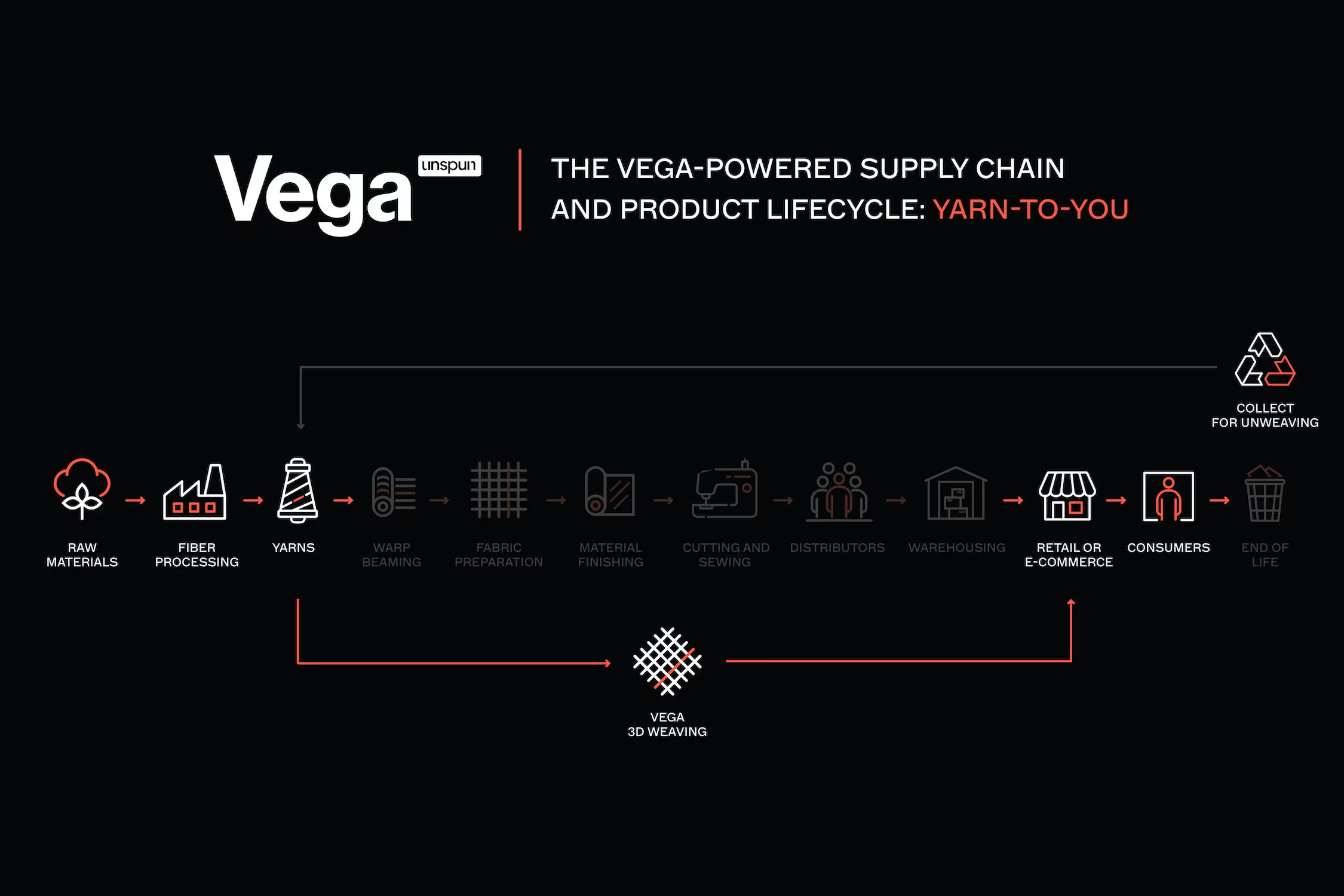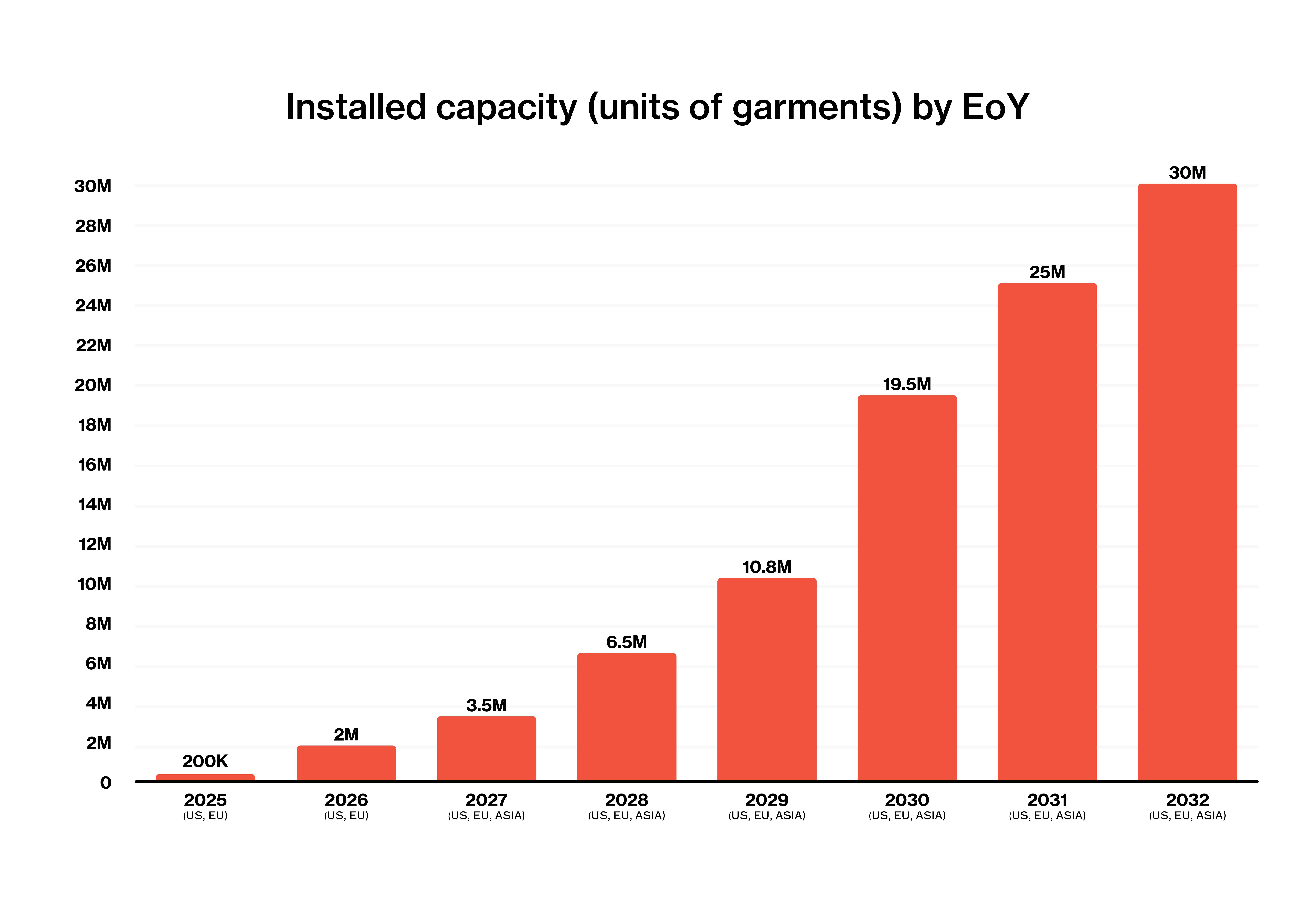Trump’s new tariffs are sending shockwaves through the fashion industry. Brands already navigating economic uncertainty and shifting demand now face a sudden reckoning on cost, sourcing, and supply chain strategy. The rules of the game are changing fast—and what comes next will redefine how fashion is made, priced, and delivered in the US and beyond.
What is the nature of reciprocal tariffs?
"Key takeaway: These tariffs are negotiation leverage in nature, but we unfortunately live in the reality where they are actually implemented. Unless explicitly reversed, these tariffs tend to stay across administrations."
Trump’s new tariffs are sending shockwaves through the fashion industry. Brands already navigating economic uncertainty and shifting demand now face a sudden reckoning on cost, sourcing, and supply chain strategy. The rules of the game are changing fast—and what comes next will redefine how fashion is made, priced, and delivered in the US and beyond.
In short, negotiation chips across everything trade- and non-trade related.
Tariffs charged to the US column is calculated based on:
US trade deficit / Total US import - against the country
For example, average Japan quantitative tariffs to the US historically have been under 5%. According to the US Census Bureau, in 2024, the US had a trade deficit of $68.5bn against a total import of $148.2bn from Japan, resulting in the 46% “tariffs charged to the USA” below.
For countries that show up with a 10% “tariffs charged to the US”, the US ran a trade surplus against the overwhelming majority of those countries.
We believe the policy intentions are to negotiate with countries and convince companies to invest and manufacture in the US. On negotiations, both trade and non-trade topics are on the table. For instance, the China-US talks could include convincing the Chinese government to approve the Tiktok deal. In the meantime, the sheer magnitudes of these tariffs will inevitably push companies to re-think their supply chains.

How long will these tariffs last?
The 2025 apparel tariffs will likely last several years, potentially through 2028 or beyond. Trump’s 2019 apparel tariffs under Section 301 are still in effect today, and the 2018 steel tariffs lasted over 3 years for most countries. By contrast, Bush’s 2002 steel tariffs were scrapped in 18 months, however, it was only done so after WTO pressure.
With no expiry set, no trade deal in sight, and the tariffs launched early in a presidential term, history suggests they’re built to stick—unless inflation or industry pressure forces a reversal.
How significant is this?
The US accounts for 20% of the global apparel market, generating over $359B in 2024 (Statista). The largest listed apparel companies derive disproportionate percentage of revenue from the US market.
With 98% of apparel and 99% of footwear in the US imported, the impact is broad and immediate (Business of Fashion). The elimination of the de minimis exemption adds further pressure on ultra-fast fashion giants like Shein and Temu. Contrary to popular belief, the US apparel import origins are extremely concentrated, with China, Vietnam and Bangladesh accounting close to 50% of all imports (International Trade Administration), and the top ten accounting over three quarters of all US apparel imports.

All top exporting countries to the US are subject to at least 20% of reciprocal tariffs.

Plausible solutions in a post-tariff world
"Key takeaway: The tariff will effectively wipe out all economic profit in the US apparel industry, even in the generous case of 10% price hike and apparel manufacturers taking losses on production."
In this section, we explore the three plausible paths in a post-tariff world:
- passing on cost increases to upstream (manufacturers) and downstream (consumers)
- sourcing from alternative hubs under the new tariff regime
- producing in the US
Can tariffs actually be passed to manufacturers and consumers?
Simple case study - Bangladesh pants imports into the US.

On a pair of simple imported chino pants that retail for $30 in the US, there is simply not enough profit margin along the value to sustain the tariff impact.
Even if we assume a generous 10% price hike to the end consumer, i.e. $3, the absolute top-end of what price inelastic luxury customers have endured for the past couple of years, a $4.4 tariff (37% of imported value of $12) will wipe out the remaining net profit margin for the majority of well-performing brands who have enjoyed approximately 5% in net profit margin.
Since covid, apparel manufacturers have been mostly breaking even or earning 2-3% of net margin, i.e. $0.3. Even if manufacturers are willing to produce at a loss, due to high fixed costs, apparel brands are only optimistically looking at a 1% net profit margin.
What are some viable alternative hubs?
"Key takeaway: There are bright spots in this new paradigm, nearshoring via Mexico / Honduras and a trade bubble with the EU might become viable diversification strategies."
The situation is rapidly evolving. But there are subtle bright spots in this new tectonic map of regional supply chains.
Nearshoring from Latin America
Among the top-ten exporting countries, the US ran a trade surplus with Honduras, resulting in a “preferential” 10% reciprocal tariff treatment in this new regime. Also given Mexico’s track record in successfully working with this administration, there is optimism that the 25% tariff can be negotiated down.
Trade bubble with the EU?
Compared with the US, the EU has long developed and cultivated a nearshoring strategy for its broad Europe-for-Europe vision. Destinations such as Portugal, Poland, Turkey and Morocco have long enjoyed a fairly comprehensive textile infrastructure while benefiting from proximity to the vast EU markets.
If the EU successfully negotiates a “zero-for-zero” trade pact with the US, some of these destinations can become viable economic sourcing hubs for the US.
So, let’s make it in the USA?
Is on-shoring even feasible?
Following through with the previous example, after tariff, a pair of chino imported from Bangladesh will now cost $16.44 to import.
Traditionally, US-made pants cost ~$22. A pair of pants take 35-40 minutes to make. Labor costs alone account for ~$11, assuming an hourly labor rate of $18. To competitively produce in the US, we need to save at least $5, i.e. 18+ minutes in labor time - a shift only possible through automation. Onshoring becomes viable only with innovations that dramatically reduce labor and boost efficiency.

Other considerations
1. Drastically reduce dead time amidst more uncertainties
In this paradigm, speed is the ultimate survival weapon. The days for 12+ month lead times are over. Many unforeseen conditions can happen during that 12-month lead time, leading to lost sales, locked-in working capital and wasted inventory.
2. Diversification is the name of the game
Even if many of these countries successfully negotiate bilateral trade deals with the US, non-market factors, e.g. perceived uneven defence spending, might plunge countries into punitive tariff zones again. Being exposed to a single-source manufacturing hub will kill companies.
3. Agility through hyper-just-in-time production
The above analysis on unit economics assumes a consistent sell-through rate. In this new stagflationary environment, apparel spending might stay fairly discretionary for a while. Companies will have to shift production depth and breadth as macro environments evolve.
The US treasure map
"Key takeaway: US onshoring is now made possible via automation, unspun has been tracking 20+ apparel manufacturers that could partner with brands seeking to manufacture locally."
Since unspun’s founding, we have been working hand-in-hand with a strong network of US manufacturers to scale this innovation and make onshoring more economical. Here’s a curated list of standout local partners we’ve met along the way.

How can unspun help?
"Key takeaway: unspun has been developing 3D weaving to localize manufacturing since our founding and can produce and scale to 1M+ units within the next 12 months."
Since 2018, unspun has been building proprietary 3D weaving technology and software to make onshore and nearshore apparel production a reality. Our proven system slashes lead times from weeks to minutes, taking pants from yarn to finished garment in a single, seamless process. This process enables labor production time to reduce from 40 minutes to under 15 minutes. It works because it negates the need for many traditionally time-consuming apparel production steps.

Cost is no longer a barrier: we’re scaling through offtake agreements with major partners like Decathlon and Walmart. We’ve already launched a pilot facility in California and are preparing to open full-scale plants in the US and Europe.
Backed by years of policy work—spanning multiple administrations—we’re on the verge of announcing a US manufacturing consortium alongside leading brands. To power this next phase of growth, we recently closed a $32M funding round, and have committed a significant portion of the funding in helping to onboard brands and manufacturers in the new age of automated apparel manufacturing.
Below is our scheduled capacity:

Come see for yourself!
Experience the future of local and automated apparel production with us. We’re hosting exclusive in-person and virtual demonstrations of our 3D weaving technology. Join us!
🇺🇸 San Francisco
Wednesday, April 23, 2025; 5:30-8:30pm
unspun HQ, 6655 Hollis Street, Emeryville, CA
An evening summit hosted by unspun™ and American Circular Textiles. Join us for networking, panel discussions, and hanging out in the world’s first 3D woven powered-microfactory.
RSVP via this registration link.
🇭🇰 Hong Kong
Friday, May 9, 2025, 9:30 - 11:30am
unspun Studio, Shop B2, G/F, 6-10 Shin Hing Street, Central, Hong Kong
An interactive breakfast experience with a live virtual tour of the world's first 3D weaving-powered micro factory and our technology with unspun’s founders
RSVP via this registration link.
🇪🇺 Europe (Coming Soon)
Summer 2025
Secret location
Experience the entire end-to-end process of localized apparel production with 3D weaving in Europe, and be the first to see Vega in action.
Register here to get on the list.
🔗 Can’t make these dates?
Schedule a time to chat or a virtual demo. We’re happy to discuss our pipeline, share machine performance data, or walk you through our upcoming plans.
.svg)